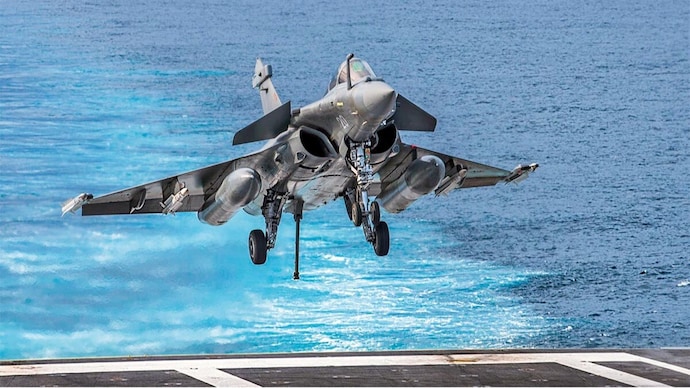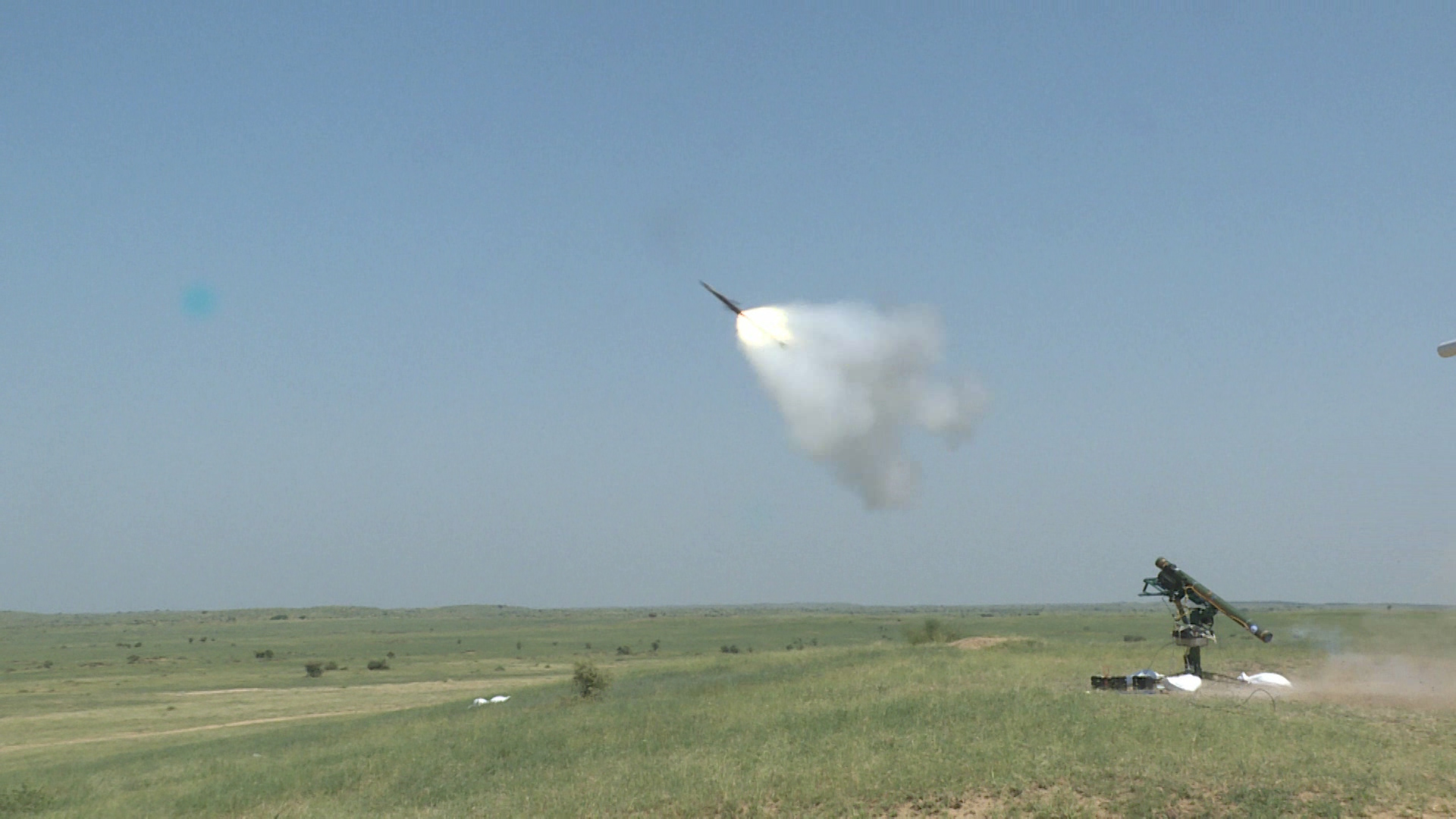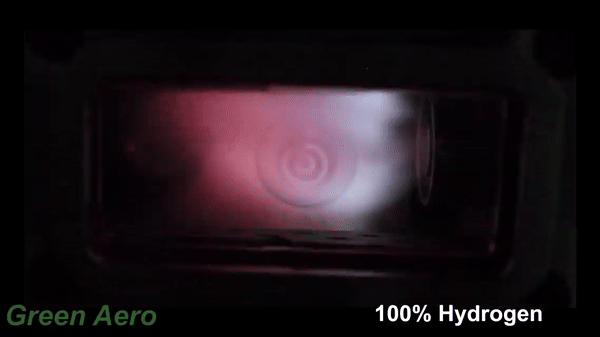SOURCE: IDRW.ORG

In a significant development for India’s defence exports, Morocco has signed an agreement with Tata Motors for the establishment of a factory to manufacture the WhAP (Wheeled Armoured Platform) 8×8 Infantry Fighting Vehicle (IFV). This marks a strategic victory for India, as the WhAP faced stiff competition from China’s NORINCO Type 08 (ZBL-08 or VN-1 export version).
The competition for the Moroccan contract was fierce. While China offered a lower price point, the Moroccan Land Forces were ultimately swayed by the WhAP’s superior quality and reliability. The WhAP boasts a powerful American Cummins 600hp engine and Allison 4500SP automatic transmission, providing exceptional performance and dependability. This, coupled with concerns about China’s after-sales service for previous weapons deals, tipped the scales in India’s favor.
Continue readingSOURCE: IDRW.ORG

The Aeronautical Development Establishment (ADE), a premier research and development laboratory under DRDO (Defence Research and Development Organisation), is currently seeking qualified pilots with extensive experience in unmanned aerial vehicle (UAV) operations to join its UAV projects. ADE is looking to engage these pilots as consultants to help develop and test various UAVs and unmanned aerial systems (UAS) that are crucial for India’s defense sector.
The primary responsibility will be the planning and execution of all UAV test operations as per the project requirements at ADE. This includes flight testing, data collection, and operational analysis. The consultant will be involved in UAV and UAS testing, covering all aspects of development, including autonomous systems, endurance testing, and performance validation.
Continue readingSOURCE: AFI

The Indian Navy’s Rafale Marine fighter jets are set to receive a significant upgrade with the acquisition of Meteor long-range beyond visual range air-to-air missiles and Astra Mk1A beyond visual range air-to-air missiles. The deal for 26 Rafale M jets is expected to be finalized by the end of the year.
The Meteor missile, developed by MBDA, is a state-of-the-art air-to-air missile with a range of over 150 kilometers. It is capable of engaging targets at high speeds and altitudes, making it a formidable weapon for air defense missions.
Continue readingSOURCE: AFI

At the Manohar Parrikar Institute for Defence Studies and Analysis, Udayant Malhoutra, CEO and Managing Director of Dynamatic Technologies Limited, presented the company’s vision for the development of a Regional Transport Aircraft (RTA) for India. In his address, Malhoutra emphasized Dynamatic Technologies’ readiness to contribute significantly to the project, citing the company’s extensive experience in manufacturing aircraft fuselages for prominent international Original Equipment Manufacturers (OEMs).
According to idrw.org, Malhoutra voiced strong support for the RTA initiative, showcasing the confidence that Dynamatic Technologies brings to the table. The company’s involvement in producing fuselage sections for leading aircraft manufacturers has cemented its reputation in the aerospace industry, positioning it as a key player for India’s domestic aviation programs. Malhoutra’s backing of the RTA proposal is a reflection of the company’s ambitions to leverage its aerospace expertise for national projects.
Continue readingSOURCE: AFI

DroneAcharya, a leading Indian drone technology company, has announced a strategic partnership with American Blast Systems (ABS) to expand its presence in the United States, United Kingdom, and European markets. This collaboration aims to drive growth in the manufacturing and distribution of drones across various sectors, including defense, law enforcement, agriculture, and logistics.
Under the terms of the Memorandum of Understanding (MoU), DroneAcharya and ABS will jointly design and develop drones in Los Angeles. These drones will be specifically tailored for applications such as surveillance, security, and logistics, catering to the diverse needs of the target markets.
Continue readingSOURCE: AFI

The Defence Research and Development Organisation (DRDO) has successfully completed the developmental trials of the Indigenous Very Short Range Air Defence System (VSHORADS). This fourth-generation, miniaturised missile system is designed to provide critical air defence capabilities to the Indian armed forces.
To ensure timely production and deployment of VSHORADS, the DRDO has partnered with Adani and ICOMM in the Development cum Production Partner (DcPP) mode. These two companies will play a key role in the limited production of VSHORADS, which will subsequently undergo user trials by the Indian Army.
Continue readingSOURCE: AFI

The Canadian government has reiterated its unwavering support for India’s territorial integrity, dismissing any notion of a separate Khalistan state. Deputy Minister for Foreign Affairs David Morrison made this clear during his testimony before the foreign interference commission in Ottawa on Friday.
Morrison emphasized Canada’s unequivocal stance on India’s sovereignty, stating, “Canada’s policy is very clear that India’s territorial integrity must be respected. There’s one India, and that’s been made very clear.” He further clarified that while Canada views certain activities related to pro-Khalistan elements as “awful,” they are still protected under the country’s Freedom of Speech laws.
Continue readingSOURCE: RAUNAK KUNDE / NEWS BEAT / IDRW.ORG

The Gas Turbine Research Establishment (GTRE), India’s premier organization for the development of jet engines, is currently in discussions with several foreign aerospace Original Equipment Manufacturers (OEMs) for the joint development of a new 110kN engine to power India’s ambitious 5th-generation Advanced Medium Combat Aircraft (AMCA) program. Each potential partner has presented unique proposals, including the use of modified flying test-bed platforms, adding an interesting dynamic to the engine development process.
Flying test-beds are crucial in testing jet engines under real-world conditions. These aircraft allow engineers to gather in-flight data, monitor engine performance, and identify areas for improvement. The use of flying test-beds also provides a controlled environment for testing new engines before they are integrated into the actual fighter jet.
Continue readingSOURCE: RAUNAK KUNDE / NEWS BEAT / IDRW.ORG

In a significant statement that could shape the future of the Indian Air Force’s procurement strategy, Air Chief Marshal Amar Preet Singh, the newly appointed Chief of Air Staff, suggested that the aircraft selected under the much-anticipated Multi-Role Fighter Aircraft (MRFA) tender for 114 jets should follow the “Jaguar model.” This model refers to the autonomy the Indian Air Force (IAF) has enjoyed in upgrading its fleet of SEPECAT Jaguar jets without relying on assistance from the original equipment manufacturers (OEMs), a feature that has allowed the IAF to enhance the aircraft’s capabilities through multiple phases of indigenous upgrades.
The Jaguar has been a cornerstone of the IAF’s operational capability for decades, undergoing numerous upgrades that extended its service life and enhanced its combat effectiveness. When the Jaguars first joined the IAF, they went through several rounds of upgrades, all carried out by Indian engineers, particularly through the efforts of the Aircraft and Systems Testing Establishment (ASTE), without the need for external intervention from the OEM. These phases of upgrades culminated in major programs like the Darin-I and Darin-II standards, which significantly boosted the aircraft’s operational capabilities by incorporating indigenously developed technologies.
Continue readingSOURCE: RAUNAK KUNDE / NEWS BEAT / IDRW.ORG

Mumbai-based Anadrone Systems Private Limited, a company primarily known for manufacturing licensed QinetiQ Banshee aerial target platforms in India, has now developed a new indigenous kamikaze drone called Shakti. This drone is designed to carry out long-range precision strikes, with an impressive endurance of 6 to 7 hours and an operational range of 500 kilometers, making it a formidable addition to India’s growing unmanned aerial systems (UAS) capabilities.
The Shakti drone can carry a payload of up to 30 kg of explosives, designed to deliver significant damage in combat scenarios. It utilizes a rear pusher propeller engine, a propulsion system that is both efficient and well-suited for the drone’s long-endurance missions. This configuration helps improve aerodynamics and fuel efficiency, ensuring that the Shakti can remain airborne for extended periods and cover a vast operational area.
Continue readingSOURCE: AFI

The French-speaking military online portal, Avions Legendaires, has reported that Lockheed Martin is positioned as the primary challenger to Dassault in the Indian Air Force’s (IAF) Medium Multi-Role Fighter Aircraft (MRFA) tender for 114 jets. The report claims that Lockheed Martin has offered its F-16V Viper, rebranded as the F-21 for India, as a strong competitor to Dassault’s Rafale fighter jet.
What makes Lockheed Martin the main challenger to Dassault is not entirely clear from the report, but the portal hints at significant backing from the U.S. administration, which is allegedly exerting diplomatic pressure on India to select the American fighter jet. The F-16V Viper, a modernized version of the legendary F-16, has already seen international success, with Taiwan purchasing 66 units from Lockheed Martin.
Continue readingSOURCE: AFI

A major setback for Russia’s drone program: A heavy attack stealth drone, believed to be an S-70 Okhotnik, has been destroyed in what appears to be a friendly fire incident over the Donetsk front. The drone was allegedly shot down by a Russian Su-57 fighter jet near Konstantinovka.
Footage circulating on social media shows the aftermath of the incident, with severe damage to the drone and surrounding area. The red star on the drone’s wing is clearly visible, confirming its Russian origin. Ukrainian sources claim the drone was downed in Ukrainian-controlled territory, approximately 10 miles behind their lines.
Continue readingSOURCE: AFI

In a significant achievement, the South Western Command of the Indian Army has completed the maiden flights of Air Target Imitators (ATIs) in a high-altitude area, marking a pivotal moment in the Army’s efforts to enhance operational readiness. This breakthrough demonstrates the Army’s commitment to pushing technological boundaries and utilizing innovative methods to train air defense troops in challenging environments.
The deployment of the ATIs in high-altitude areas opens up new opportunities for air defense troops to train in a realistic combat environment. These air target imitators are designed to replicate the flight characteristics of piston-engined or jet-propelled aircraft, emitting energy in the infrared wave band to simulate a wide range of aerial threats.
Continue readingSOURCE: AFI

Green Aero Propulsion, a leading innovator in sustainable aviation technology, has announced a significant milestone in its development of hydrogen-based aero engines. The company has successfully test-fired its first hydrogen-based combustor, showcasing a major step towards a cleaner and more efficient future for aviation.
Prithwish Kundu, founder and CEO of Green Aero Propulsion, expressed his excitement about this achievement. “This is a truly remarkable moment for our team,” he said. “Converting theoretical concepts from textbooks into tangible, working hardware is incredibly rewarding. Our hydrogen-based combustor is a testament to the dedication and expertise of our engineers.”
Continue readingSOURCE: IDRW.ORG

The Royal Moroccan Army has placed an order for 150 units of the Wheeled Armoured Platform (WhAP 8×8), a cutting-edge armored vehicle developed through a collaboration between Tata Advanced Systems and India’s Defence Research and Development Organisation (DRDO). This deal marks a significant achievement in India’s defense exports, underscoring the growing international recognition of indigenous Indian defense technologies.
New details have emerged, revealing that the foundation for this substantial contract was laid as early as 2022, when Tata Advanced Systems shipped a WhAP 8×8 vehicle to Morocco for trials, entirely at their own expense. The vehicle, which was manufactured at Tata’s facility in Pune, was transported via Mumbai port to Morocco, accompanied by a small team of Tata personnel to facilitate the trials and provide technical support.
Continue reading